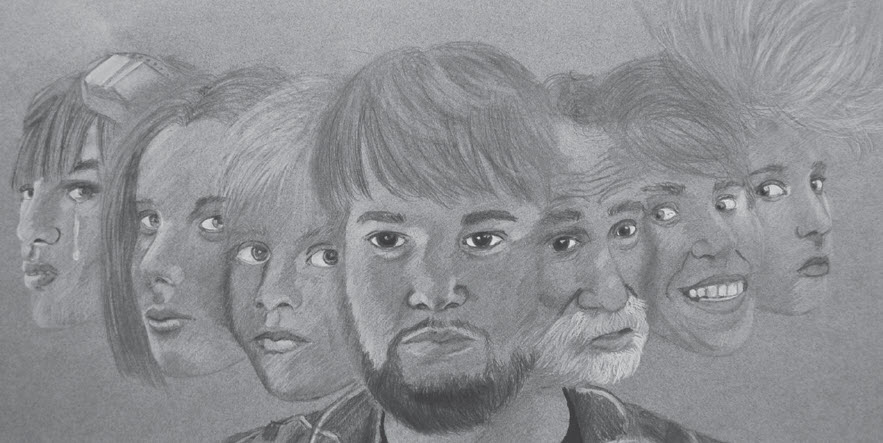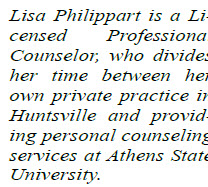Dissociative Identity Disorder (Formerly Known as Multiple Personality Disorder)
 By: Lisa Philippart
By: Lisa Philippart
My hope for my readers is that by now you realize that mental health conditions exist on a continuum. Everybody feels depressed or anxious at times, but this doesn’t mean that a diagnosis needs to be made for clinical depression or generalized anxiety disorder. In this same way and to some degree, we all experience dissociation, or a lack of connection within the multiple aspects of ourselves. This can be described as feeling “unplugged” in some way. The most common example of a mild and common dissociation would be daydreaming. Or, have you ever been fully absorbed in a movie or book? Ever driven somewhere familiar without remembering much of the drive later? (There’s actually a term for that: highway hypnosis.) When dissociation becomes a more serious problem and interferes with the ability to perform activities of daily living, then dissociative identity disorder or DID may need to be considered. DID is defined as the presence of two or more distinct personality states, which alternate taking control. This can cause gaps in memory such as forgetting personal information or being able to recall everyday actions. Unfortunately, DID is the least researched mental illness, but knowledge about this disease is growing.

A common misconception regarding DID is that the person affected has multiple personalities. The name was changed specifically because the term “personality” was misleading. To clarify, all the “identities” are part of a single person, with each identity being expressed as part of the whole. Those suffering with DID do not have more than one personality, but rather less than a complete personality. At one time, DID was considered a rare condition. According to the American Psychiatric Association (APA,) the numbers show that the prevalence of DID is actually similar to obsessive compulsive disorder (OCD) and more common than schizophrenia. DID isn’t always obvious, to the observer or the sufferer. Usually DID begins with the person being aware of memory lapses. And whether the person is aware of this or not, functioning ability remains pretty good. This means that DID can be difficult to diagnose, particularly because it can mimic other conditions and can exist with other disorders. The sad truth is that people with DID are in the mental health system about 7 years before their condition is correctly diagnosed!


What we are learning now is that DID may be linked to childhood trauma. Dissociating is a way to escape feeling the impact of a traumatic event, and to “run away” mentally when it’s not possible to run away physically. Research is showing that the younger a person is when the trauma occurs, the more likely periods of dissociation transform into completely dissociated identities. One of the most recognized “celebrities” struggling with DID is former professional football player, Herschel Walker. Herschel presented as a very “normal” successful athlete and entrepreneur. As a child, he was bullied because he was overweight and stuttered. Herschel was able to deal with his tormenters by creating another person inside of himself. This person was strong, did not give up, and became almost superhuman. This other person was Herschel’s coping mechanism to deal with the real pain he was feeling inside. Learning about successful people with DID can be helpful. According to Walker, “Whether it’s communication, whether it’s getting more information, or whether it’s just acknowledging that something is going on. I think that’s the brave part because once you’ve done that, you’re ready to go forward.”
By: Lisa Philippart
Licensed Professional Counselor